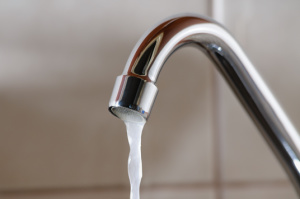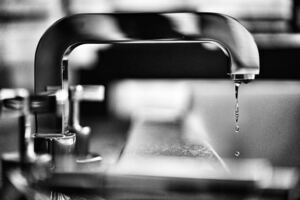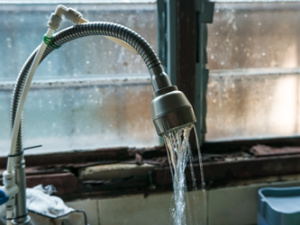
Low water pressure in the kitchen sink can be a frustrating experience that disrupts daily routines. It may seem like a minor issue, but it could indicate underlying problems with your plumbing system.
More...
Low Water Pressure in the Kitchen Sink: Causes and Solutions
Low water pressure in the kitchen sink can have various causes, ranging from minor clogs to more significant problems, such as leaky pipes or faulty valves.
This article will explore common reasons for low water pressure and solutions to rectify them. Doing so will better understand what is causing your inadequate water output problem and how you can fix it without having to call a plumber every time.
Identifying the root cause of insufficient water pressure is crucial in finding practical solutions. Simple fixes such as cleaning debris from the faucet's aerator or tightening loose connections may work, but other solutions may be necessary if those fail to solve the problem in some cases.
However, a homeowner may need a plumber to address severe issues such as corroded pipes or leaks.
Reducing frustration caused by weak water flow requires regular maintenance checks on your plumbing system and following the suggestions provided in this article. Doing so ensures that your kitchen sink's water pressure remains consistent and reliable without requiring frequent repairs.
Possible Causes of Low Water Pressure in Kitchen Sinks
If you're experiencing limited water output in your kitchen sink, several factors could be causing it. Clogged pipes, corroded pipes, and leaking pipes are all common culprits that can affect the water flow in your home.
Clogged Pipes: Over time, pipes that supply water to your home become clogged with debris, such as sand, sediment, or even minerals from hard water buildup.
Corroded Pipes: When pipes begin to corrode internally due to exposure to acidic substances like vinegar or lemon juice over an extended period.
Leaking Pipes: Leaky or damaged pipes may cause low water pressure in kitchen sinks. Breakage or cracks along the pipe can result in a loss of water volume as it drips out through the hole.
Clogged, corroded, or leaking pipes can all contribute to diminished water pressure issues in your kitchen sink. Regular maintenance and prompt repairs can prevent these problems and ensure a steady flow of water for all your needs.
Causes of Low Kitchen Sink Water Pressure: Maintenance, Valves, or Tank?
If you've ever experienced poor water pressure in your home's kitchen sink, there could be a few potential culprits causing the issue. From municipal maintenance to faulty valves and pressure tanks, understanding the root cause is crucial for finding a solution.
Municipal Water Supply: Sometimes, municipalities maintain their systems, delivering lower-than-normal pressures.
Faulty Valves: Your home's main shut-off valve may have been closed partially, causing low flow through all taps within the house, including those found at kitchens sinks
Faulty Pressure Tank: The role of a pressure tank is to store and maintain an adequate supply of pressurized water for distribution throughout your home's plumbing network.
If faulty, it can cause inconsistent supply and reduced flow rates from taps, including those found at kitchen sinks.
Finding the root cause of insufficient water pressure in your kitchen sink is significant in discovering a resolution and reinstating adequate flow.

Other Factors Affecting Low Water Pressure
If you've noticed a decrease in the volume and force of water coming out of your sink faucets, various reasons could lead to this frustrating problem.
Three common culprits are water hammer, loose connections, and hard water buildup, all of which can negatively impact your household plumbing system's performance.
Water Hammer: Water hammer is caused by sudden changes in fluid velocity within pipes, usually due to quick shut-off valves or backflow preventers on appliances like dishwashers. Vibrations and reduced water volume from sink faucets result from these sudden changes.
Loose Connections: Loose connections occur when fittings become loose over time due to wear & tear; they create air gaps that enter into pipes, reducing the force exerted on tap handles and lowering their overall performance capabilities.
Hard Water Buildup: Hardness minerals such as calcium & magnesium accumulate inside household Plumbing Systems, forming scale deposits over time; these deposits restrict the total capacity available at any given outlet since only narrow passageways remain open, allowing lesser amounts than expected flows out, ultimately affecting sink taps' spray power.
It is vital to keep your plumbing system in good condition by regularly checking for water hammers, loose connections, and hard water buildup, which can all lead to reduced flow from your sink faucets.
Solutions for Low Water Pressure in Kitchen Sink
Maintaining proper water pressure in your home ensures a smoothly running plumbing system. Here are additional ways to enhance water pressure and maintain consistency throughout your residence.
Clean Your Faucet Aerator: Remove it from its base and soak it overnight in a bowl filled with equal parts distilled vinegar & hot water (it helps remove mineral deposits). Rinse thoroughly before reinstalling back into place afterward.
Replace The Plumbing Fixtures: If cleaning doesn't restore full pressure, replacing worn-out plumbing fixtures such as faucets and washers is recommended.
Remove Debris From Pipes: You could use a drain snake or hydro jetter machine specially designed to remove blockages inside drains if accumulated debris has caused blockage and considerably reduced flow rate.
Water Pressure Regulator: A water pressure regulator is a device that can help regulate water flow in your home. It reduces incoming water pressure and makes it more manageable for the entire plumbing system, thus preventing low-pressure issues.
Incorporating these tips to maintain your plumbing fixtures and improve water flow can prevent any low-pressure issues in the future.
Prevention of Low Water Pressure in Kitchen Sink
Keep your kitchen sink water healthy with regular plumbing maintenance and measures like cleaning pipes, using a water softener system for hard water, checking the shut-off valve, and contacting the municipal supply if needed.
Maintaining a routine plumbing maintenance schedule is the best practice for keeping your kitchen sink water supply healthy.
Regularly clean your home's pipes and fixtures with hot water and vinegar, or use an approved cleaning solution.
If you have hard water, consider installing a water softener system that can reduce the buildup of minerals on pipes and faucets.
To ensure that tap water flows smoothly into all areas of the house, including kitchen sinks, it's essential to frequently check and ensure the home's main shut-off valve is completely open.
If you suspect issues with your municipal supply, contact them directly so they can investigate any possible faults or maintenance concerns.
Additional Preventative Measures
To prevent any significant plumbing problems in the future, it is crucial to promptly identify and resolve the cause of decreased water pressure in your kitchen sink. The following suggestions may help prevent and address this issue.
Licensed plumbers conduct regular plumbing maintenance at least twice a year to prevent clogged or corroded pipes that may result in reduced water flow rate from your faucets.
Replace old galvanized steel pipes with copper or plastic piping, as outdated materials will likely corrode over time.
Clean the P-Trap regularly using baking soda mixed with hot water & vinegar (a natural remedy) and flushing out with clean tap water.
Having sufficient water pressure ensures efficient operations when doing dishes or cooking; therefore, always be proactive about identifying any issues early enough before they escalate into costly repairs.
By taking these proactive measures, you can ensure that your kitchen sink's water pressure is acceptable, allowing for efficient and hassle-free use.

In the Final Analysis
Dealing with low water pressure in the kitchen sink can be frustrating, but it is essential to take a systematic approach to identify the root cause of the problem.
By following the recommended solutions, such as identifying clogged or corroded pipes, faulty valves, or municipal water supply issues and addressing them appropriately, users can expect to fix their low-pressure problems permanently without reoccurring.
Moreover, homeowners should maintain good hygiene habits around plumbing systems and consider preventive measures like installing a water softener system or hydro jetter machine and regularly using distilled vinegar to clean pipes and fixtures. These practices can prevent hard-water minerals buildup that lowers the home's overall water pressure.
It is vital also for people dealing with low water pressure in their kitchen sink not to overlook age-related wear-and-tear factors like calcium & magnesium accumulation over time that affect overall home water pressure.
Adding shut-off valves can reduce the flow rate, while experimenting with different faucet types may yield positive results.
Therefore, whether you are experiencing low-flow taps due to aging infrastructure or lack of maintenance on your end, these steps will improve your experience in no time.
